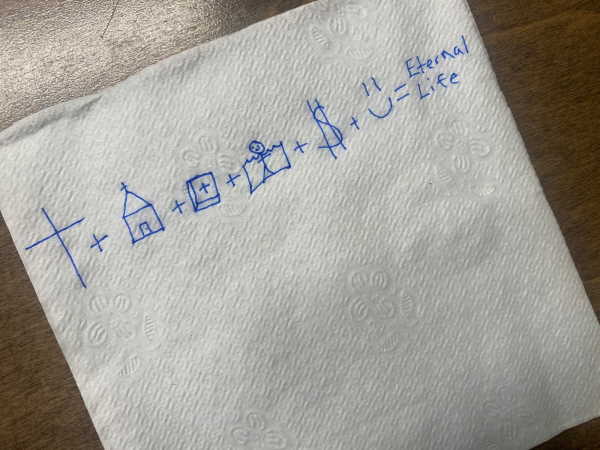
How to Share the Gospel with Those Placing Faith in Good Works
Have you ever had a spiritual conversation with someone who thinks they are a Christian and thought, “They just need to know the grace Jesus has shown them”? We become weary after sharing the gospel with people, seeing them be amazed at the beauty and simplicity of salvation by grace through faith alone, only to be dumbfounded by their replies when given the opportunity to follow Jesus. They say, “Oh, I’ve accepted Jesus as my Lord and Savior when I was 10, and I’ve been baptized.” What do you do then? You can’t say, “You ain’t no Christian! I just heard your moralistic therapeutic deism description of your faith!” Or maybe you can, in a nicer way.
I’ve shared the gospel with over 1,000 people, mostly here in the United States. The majority would say they are Christian. Why is it that during the course of our conversation, 90-95% (yes, we quantified it) proved to be putting their faith in their good works rather than Jesus alone? Their moralism was pulling their faith. After many frustrations like the scenario above, we came up with a tool that forces the listener to choose a salvation based on works or a salvation based on faith. It’s called “The Train” because it shows what engine is pulling their faith: their good works or the work of Christ. If you learn better visually, here is a video that explains this illustration clearly.
First, you should listen to the person’s story as you’re talking with them. I like to paint a scenario: “Let’s pretend you died. God asks you ‘Why should I let you into Heaven?’ What would you say?” Make mental notes of what the person says next. In my experience, most people will say something like, “I tried to be a good person,” “I went to church,” or “I went to some Bible studies.” Their list of good deeds may go on a while. It’s harder to prove to ourselves we’re good enough than it is to prove to God!
Next, begin to draw on a napkin or paper the very things they just listed in your own stick figure artwork with a plus sign (+) between each. I always begin by drawing a large cross representing Jesus because they do believe in Jesus’ existence. Then I draw a church building followed by a Bible. My favorite is drawing a stick figure standing in a tub of water representing a baptism. A smiley face representing “I’m a good person” is perfect. All of these things, in the mind of a moralist, add up to equal eternal life. Your equation should roughly look like this:
Jesus + X + X + X + X = Eternal Life
At this point, I’m explicitly clear that this is a man-made religion and does not lead to eternal life.
Next, I say, “This is what God has shown to us in the Bible leads to eternal life.” Now, your goal is to draw the exact same figures but rearrange the equation right underneath your first drawings. It should look like this:
Jesus = Eternal Life + X + X + X + X
I tell my friend that we need to have 100% faith in Jesus alone. When we have 100% faith, we have 100% eternal life. I don’t have to do good things to go to heaven one day, it’s already been promised to me so I can’t help but do good things. These good works are not giving me salvation from my sins, they’re a product of my salvation. Jesus is the cause. Good works are the effect.
Finally, I draw an “A” next to the top equation and a “B” next to the bottom one.
Jesus + X + X + X + X = Eternal Life. A
Jesus = Eternal Life + X + X + X + X B
Ask, “Which one of these best represents your life up to this point? Be honest with yourself.” Remember, you’ve already told them that “A” is the wrong answer and a man-made religion. In my experience, 90-95% of the people who call themselves Christians will say Train A. I’m explicit at this point by telling them, “The Bible says you do not have eternal life because your faith is actually in yourself and not wholly in Jesus. What would it take for you to move from ‘A’ to ‘B’?” This is your chance to listen again to see if they’re understanding what faith means. The beauty of this tool is you can make it personal to each person you’re sharing with. I always struggled in math class, but this is one equation we can’t get wrong.
Here is a white board video I created to help our students remember how to share the Train. Hopefully it’s helpful for you too.



